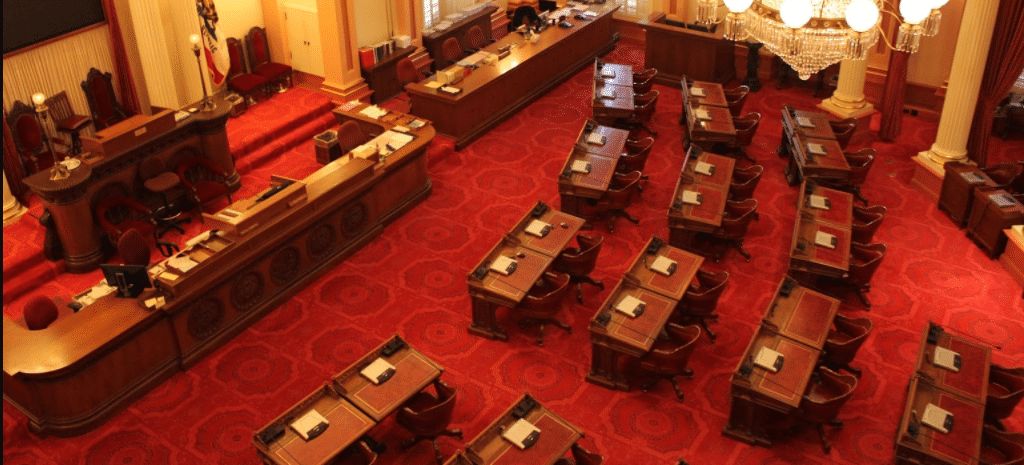A week ago, we wrote about two bills which are pending in the California legislature that could re-shape the state’s grid. It turns out that we missed one.
We had given up on SB 700, the bill that would extend the state’s popular Self Generation Incentive Program (SGIP) for another five years, after it languished for weeks in the Appropriations Committee of the California Assembly this summer. But as it turns out, the bill was not yet dead.
Following a rally by an estimated 200 solar workers on August 14, SB 700 was passed 12-5 out of the Assembly Appropriations Committee on August 16, and is now expected to go to the floor of the Assembly, its final stop before the desk of Governor Jerry Brown (D).
California Solar and Storage Association (CALSSA), which sponsored the bill and promoted the Tuesday rally, says that SB 700 is of “critical” importance in meeting the state’s clean energy goals as well as protecting tens of thousands of jobs in the residential solar industry.
“SB 700 will do for storage what SB 1 did for solar over a decade ago, namely create a mainstream market by driving up demand and driving down costs all while creating jobs and clean energy choices for consumer,” stated CALSSA Executive Director Bernadette Del Chiaro in a press statement.
While energy storage is being promoted in California through a variety of policies including mandatory procurement by utilities under AB 2514, many of these policies lean towards supporting large-scale storage. By contrast, SGIP has been a key subsidy for behind-the-meter installations, but will run out in 2020.
Current law authorizes state regulators to collect up to $166 million per year from the state’s big three investor owned utilities through the end of 2019 for this program, and under SB 700 this would be continued through the end of 2024, meaning up to $700 million in additional storage incentives to continue the program through the end of 2025.
Storage as a solution to TOU rates
In a press statement for the Tuesday rally, CALSSA specifically mentions the shift to time of use rates for residential solar as a threat to California’s solar workers. These rates have continually been pushed to later in the day by utilities, disadvantaging residential solar.
In addition to economic impact, they have also made it much harder to sell solar, as the calculation for payback has gotten much more complex. And with time of use rates changing, neither sales people nor customers always have all of the information that they need to determine such economics – even if they can calculate them.
Battery storage provides an economic edge when dealing with time of use rates, but the problem has been that adding a battery systems typically doubles the cost of a PV installation. And while SGIP has helped to address this problem, battery storage is not becoming affordable for most solar consumers without subsidies in the timeframe of the expiration of the SGIP program. Furthermore, SGIP rounds have been quickly subscribed, meaning that there is much more demand than available incentives to date.
Now this trifecta of renewable energy bills – SB 100 (100% clean energy by 2045), AB 813 (grid regionalization) and SB 700 (SGIP extension) will be awaiting final action in the Assembly and Senate, which must happen before California’s legislative session ends on August 31.
This content is protected by copyright and may not be reused. If you want to cooperate with us and would like to reuse some of our content, please contact: editors@pv-magazine.com.









How will this change the rebate rates and schedule? Does a 5 year extension mean start over at 50cent/watt? How can this promote the market if 99% of rebates are reserved by a few large solar intallation/marketing companies, and not available to smaller installers? This is just a subsidy for large higher cost solar installers like Solar City/Tesla, while prices stay the same for the general market. The rebates are essentially being reserved and resold for profits instead of consumer price reductions.
I have seen more than a couple comments claiming that these storage systems rebates might not be so effective due to the reservation process not having conditions of time for a project. I just got off a solar site using robots to form a bid/contract in minutes for securing a reservation, no down payment. Maybe the effect of this hoarding just pushes rebates into lower tiers more ealry, and then cancelations fund the lower tiers longer?
I guess any rebate program is vulnerable to problems compared to a tarrif system that pays back over time for the real end product, being kW of battery energy sold in early evening peak power.
While details on incentive levels were not available when I wrote this article (and may still not be available for all I know), the claim about big companies taking all the incentives does not appear to be correct. Incentives in SGIP have been to date capped by installer, so that no one company can hog them all.